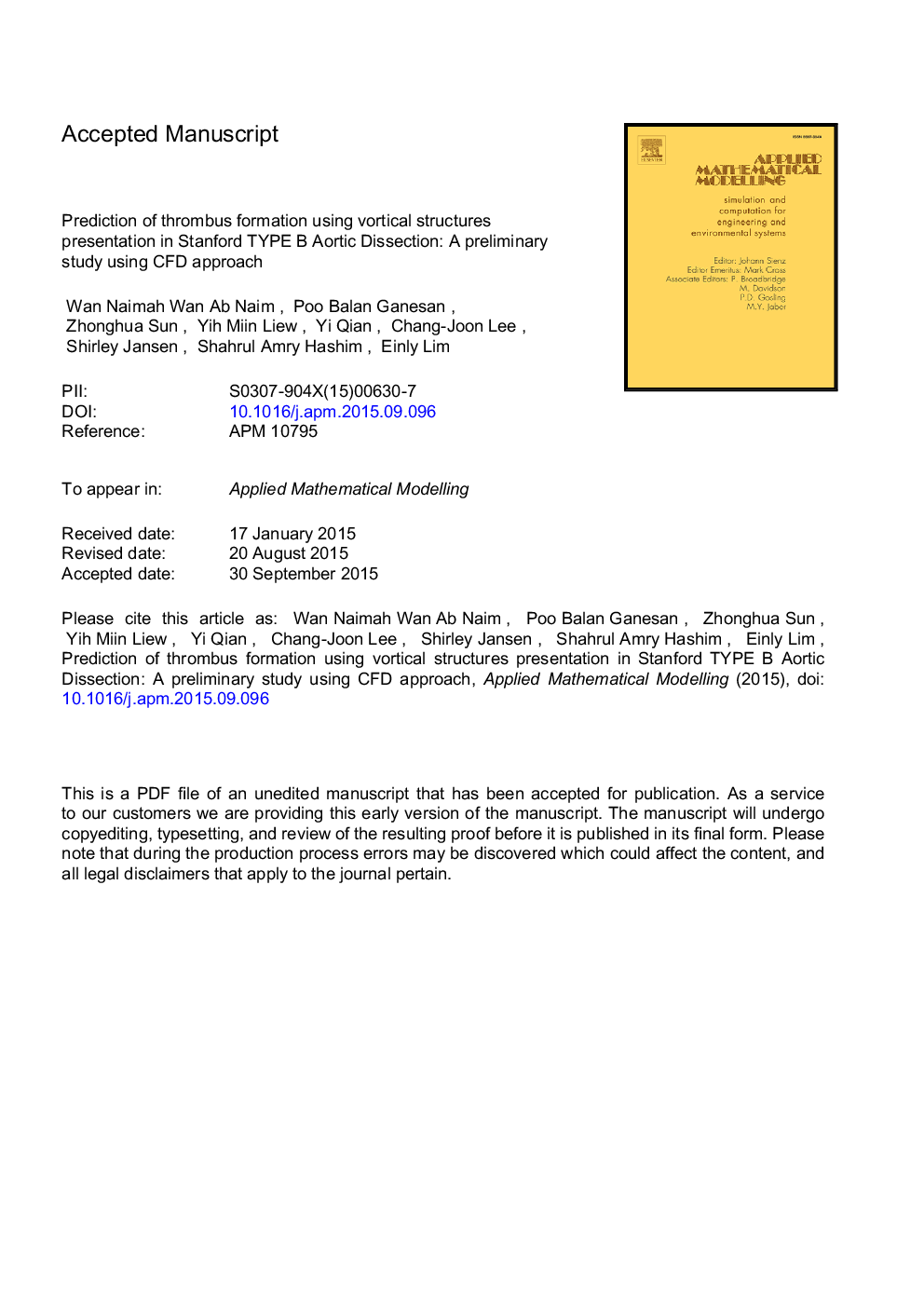| Article ID | Journal | Published Year | Pages | File Type |
|---|---|---|---|---|
| 10677550 | Applied Mathematical Modelling | 2016 | 31 Pages |
Abstract
False lumen patency has been recognized as the key determinant of aneurismal dilatation and rupture, whereas complete thrombosis has been proven clinically to improve disease outcomes. However, to date, there is no definitive method that could predict false lumen thrombosis in Stanford type B aortic dissection patient. The present study aims to use the evolution of vortical structures throughout a cardiac cycle and its interaction with the wall shear stress (WSS) to illustrate the potential mechanism behind the formation of thrombus and predict its highly possible location in an aortic dissection patient. A three-dimensional (3D) patient-specific Stanford type B aortic dissection domain was generated from computed tomography (CT) angiographic images. The effects of false lumen size on vortical structures and the subsequent risk of thrombus formation were investigated. The Carreau-Yasuda model, representing non-Newtonian fluid property was used to study the difference between Newtonian and non-Newtonian fluid settings on vortical structures. Based on our analysis, we predicted that the formation and thickening of thrombus is very much likely to occur at the posterior false lumen wall, distal to the entry tear region, in the patient. Higher λ2 intensity, associated with a higher maximum WSS and a lower minimum WSS, was achieved with an increase in the false lumen size, and we believed that this increases the risk of thrombus formation and thus aneurismal dilatation. On the other hand, percentage of flow entering the false lumen increased with an increase in the false lumen size, leading to a downward shift of the areas of thrombus formation along the false lumen wall.
Related Topics
Physical Sciences and Engineering
Engineering
Computational Mechanics
Authors
Wan Naimah Wan Ab Naim, Poo Balan Ganesan, Zhonghua Sun, Yih Miin Liew, Yi Qian, Chang-Joon Lee, Shirley Jansen, Shahrul Amry Hashim, Einly Lim,
